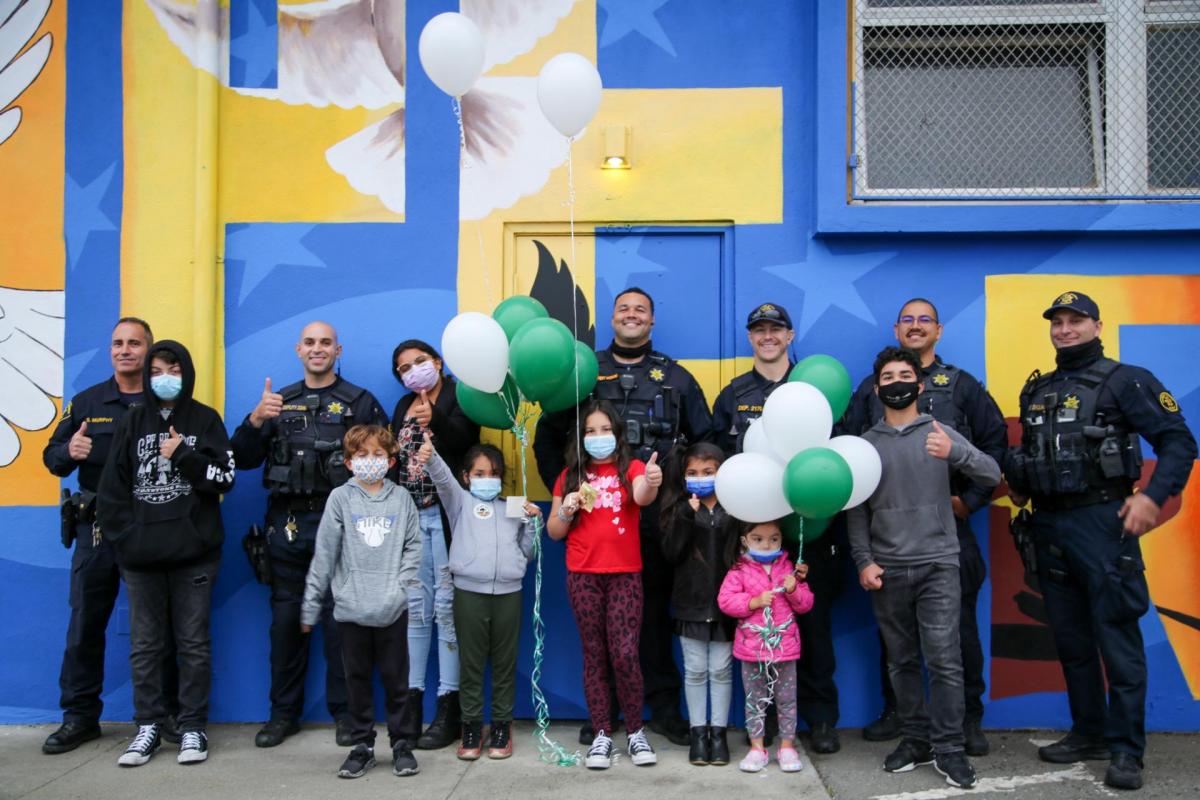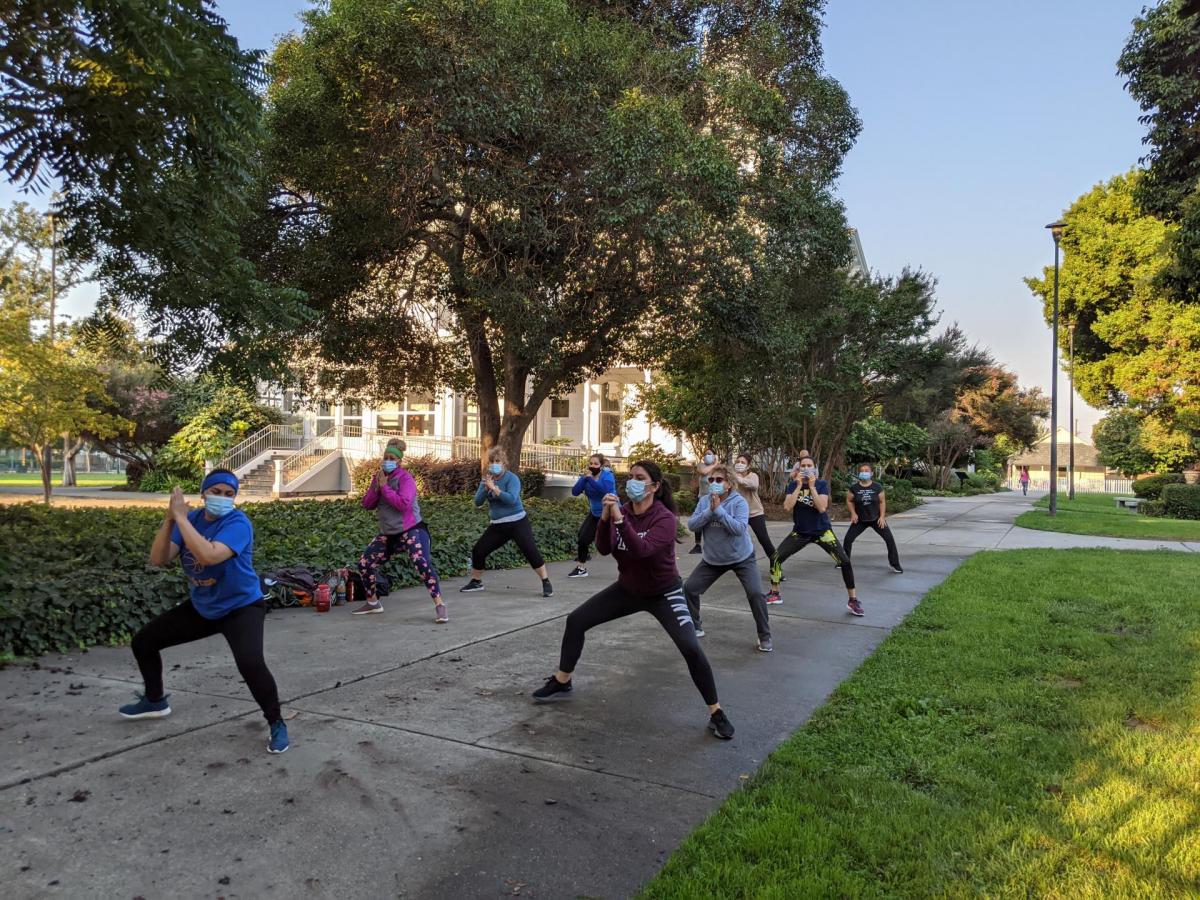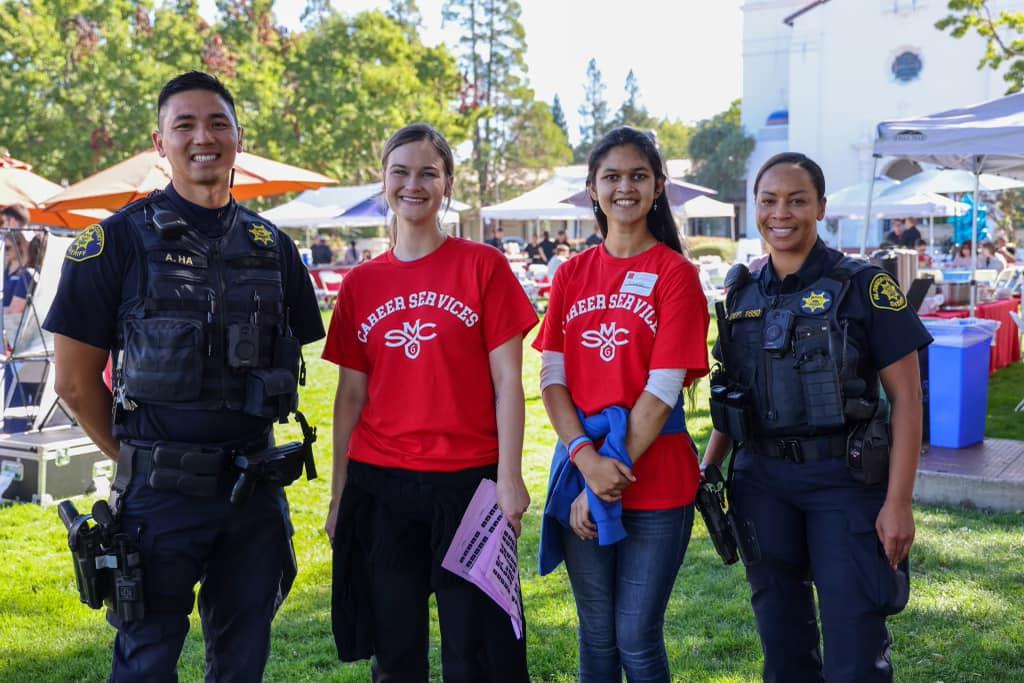Five ways Community Capitals Policing reimagines public safety
Captain Marty Neideffer is a 25-year veteran of the Alameda County Sheriff’s Office (ACSO) and a co-founder of ACSO’s Community Capitals Policing initiative. Hilary Bass is a senior program specialist with ACSO and a co-founder of Community Capitals Policing. They can be reached at mjneideffer@acgov.org and HBass@acgov.org.
Policing has come under intense scrutiny, driven in part by the killing of George Floyd and other unarmed individuals. There is also increased pressure on law enforcement to reduce the rise in crime. These two concerns do not need to be at odds with each other. By understanding and addressing the root causes of crime, cities can address both concerns and create communities where everyone can feel safe and succeed.
One possible model is Community Capitals Policing. Developed by the Alameda County Sheriff’s Office, the initiative is based on an economic model that describes the complex web of activities and connections needed for communities to thrive. The initiative emphasizes sustained and coordinated investments in the seven community capitals: natural, cultural, human, social, political, financial, and built.
The Sheriff’s Office has received national recognition for the program from the Urban Institute and Action Resources International. Although Community Capitals Policing was built with and for unincorporated communities in Alameda County, the underlying principles can serve as the foundation for success in other communities.
“City leaders across the country are thinking through what public safety means for diverse communities and where we need to go in the next decade, and I think the work [the Sheriff’s Office has] done offers a pathway to any city trying to identify new solutions and a more equitable approach to public safety,” said Mary Thomas, a senior management analyst for the city of Hayward.
Planting the seeds for success
Community Capitals Policing was developed by the Youth and Family Services Bureau of the Alameda County Sheriff’s Office over the past 20 years. The Bureau’s efforts are anchored in the urban areas of Ashland and Cherryland, two working-class neighborhoods that were wrecked by the loss of manufacturing in the 1970s and ‘80s.
In these communities, crime, unemployment, poverty, chronic disease, teen pregnancy, and mental health challenges are much higher than normal. Decades of disinvestment have left these neighborhoods without cinemas, music and arts venues, parks, recreation spaces, and libraries. There are few quality jobs and food insecurity is rampant.
When the systems that create vibrant places are out of sync, people fail to prosper. They have poor physical and mental health, less wealth, more stressors, and experience more crime and violence. Creating stronger systems, places, and relationships reduces crime and allows people to flourish.
“Public safety means more than the absence of crime,” Alameda County Sheriff Greg Ahern said. “When people lack the basic building blocks of a community — parks, playgrounds, businesses, jobs, and arts and culture — they no longer feel safe and secure.”
Recognizing this, the Sheriff’s Office established the Deputy Sheriffs’ Activities League to operate after-school activities and spearhead cross-sector partnerships that address poverty, education, and health. As operations grew, the effort expanded into health and fitness programs, community engagement, creative placemaking, and an urban farming program known as Dig Deep Farms.
“When you take vulnerable populations and start introducing not only skills development, but also give people pride that they have something to contribute, you begin to change the trajectory for so many people,” Alameda County District Attorney Nancy O’Malley said. “It’s remarkable the satisfaction that those that have gone into the [Dig Deep Farms] have been able to experience.”
At the same time, the Sheriff’s Office launched a behavioral health unit to provide evidence-based clinical case management for jail reentry. The Sheriff’s Office also developed policies mandating the least-possible use of force, procedural justice, inquiries after a critical incident, and equitable hiring practices.
These programs and policies laid the foundation for Community Capitals Policing, which is supported by five key pillars.
Pillar one: Build a deep community connection
As staff and deputies interacted with residents through the Activities League, they developed a deeper understanding of the community’s multifaceted problems, as well as the untapped knowledge and strengths that community members had to offer. Previously, deputies only saw the community at its worst. Responding to calls about robberies, vandalism, behavioral health crises, and other breakdowns in the social fabric had created a biased picture of a fundamentally broken community instead of one in need of complex solutions.
Changing this trend required reversing the mindset of the entire Sheriff’s Office. Deputies and staff needed to share the community’s fundamental values and serve as guardians and advocates rather than an occupying force.
This change did not happen overnight. Nor is the process complete. Deputies are woven into the community through countless hours of “nontraditional” police work. They have built sports facilities and learning hubs for low-income families; hosted and attended community events; donated food; and educated Spanish-speaking community members about their rights in relation to law enforcement.
“We’re on the ground, having conversations, seeing the issues people are going through,” said Charles Joe, a sergeant in the Alameda County Sheriff’s Office. “They trust us because we are accessible, and with that level of access we’re able to come up with solutions together where they feel like the police are no longer an enemy but actually have a stake in seeing them do well.”
Pillar two: Gain a historical understanding of policing
Understanding the history of policing in America and the history of communities of color is an ongoing process. As departments invest more in evidence-based practices in community policing and public safety, they will likely learn some uncomfortable truths about the history that stands between law enforcement and communities of color.
Alameda County is no different. Many residents have a generational mistrust of government authority or are living in de facto segregation. Deputies and staff strive to heal those wounds by walking with humility and curiosity and demonstrating why they deserve the investment of their neighbors’ trust.
“[The Activities League and Sheriff’s Office] have given so many young people an opportunity to be seen and heard that it has literally changed lives. I think that’s how we should go about doing it versus, you know, pounding enforcement down their throats,” said Bobby Arte, an artist and third-generation Oaklander. “Give them some opportunities and resources, and we can really make a difference.”
Pillar three: Become a learning institution
“Business as usual” is no longer an option. Public safety in the 21st century — especially in disinvested urban communities — requires dedicated professionals who are committed to learning and growth. This field requires skill sets like systems-level thinking, community-oriented problem-solving, authentic relationship building, and non-violent communication. Education is needed at every level, from the recruits at the academy to the highest levels of leadership.
Frequently, some of the best solutions come from the community. The Sheriff’s Office encourages sworn and civilian staff to ask for help directly from the community, investigate new solutions to the problems they observe, and improve the way data is used.
“It’s my job to help resolve the community’s issues and to become a figure of trust, which in turn helps me identify problems and address them in creative ways,” said Danielle Mitchell, an Alameda County Sheriff’s deputy and school resource officer. Not only am I having positive interactions with the kids; I’m also working with the businesses in the area, talking about safety-related issues, and finding different ways of bringing people together.”
Pillar four: Cultivate a systems approach
Rebuilding policing inevitably means running into systems that stymie or prevent change. Now is the time to redesign those processes, funding streams, partnerships, rules, and agencies, starting from the end results that we want for our society and working backward to create pathways that will lead to those results.
For example, drugs or alcohol are involved in 80% of domestic disturbance calls nationwide. As a result, the Sheriff’s Office has become an advocate for increased access to behavioral healthcare to help solve some of the underlying issues that lead to violent behavior. This includes counseling and support groups; treatment for substance abuse disorders; arts and recreation as outlets for stress relief; and quality, living wage jobs that allow people to live without the grinding, persistent stressors of struggling to make ends meet.
Some of these systemic barriers exist within the Sheriff’s Office or the vast civic infrastructure itself. Early stakeholders were sometimes told to stay in their lane. However, you cannot have safe communities unless people can thrive. The best scenario is to create a new lane that merges public safety with education, economic development, public arts, parks, recreation, and other policy issues that impact the quality of life for everyone.
To that end, the Sheriff’s Office has received several grants and contracts to do things that are well outside the traditional purview of a law enforcement agency. This includes things like convening a mural painting initiative; hosting community festivals; developing a permaculture certification internship for people on probation; and working with health clinics to help people who suffer from chronic diet-related diseases.
“The northern portions of Hayward are intertwined with the unincorporated parts of Alameda County, so our residents benefit from the sports programming provided by [Activities League] and the Sheriff’s Office,” Thomas said. “We are also partnering with them to launch a satellite commercial kitchen in the southern part of Hayward and can hit the ground running based on the model they built at the Dig Deep Farms Food Hub.”
Pillar five: Develop collective efficacy
The fifth pillar cannot be raised until the other pillars are in place. When trust and solidarity among residents are high, crime is reduced through collective efficacy. Instead of relying on the police for relatively minor issues, people will resolve issues informally by propagating social norms and acting on behalf of the greater community good.
Trust and solidarity between residents of the community and members of the Sheriff’s Office is also critically important. When people believe that a law enforcement agency is their enemy, collective efficacy will not include officers. Collective efficacy for public safety between law enforcement and the communities they serve is earned over years of ethical and respectful dealings.
Law enforcement should also make sure that the community knows that deputies share their fundamental values, and that community leadership and agency will be supported by channeling resources in their direction.
The seeds of success take a while to grow
This moment in history demands curiosity, compassion, and a radical reshaping of our institutions. Many of Community Capitals Policing’s most ambitious initiatives, such as supporting an equitable, local, circular food system, are coming to fruition after many years of patient groundwork. The model offers valuable new evidence and wisdom about what it will take to reconstitute policing in a way that creates the conditions for systemic reform and a safer, healthier, and more equitable future for everyone.
Creating a fully realized version of Community Capitals Policing will not be easy. Indeed, it has been challenging to even build prototypes and pilot projects. However, this work is worth it. We need to look hard at the return on investment and demand better results throughout the public sector — including law enforcement, social services, the mental health system, local food systems, the arts, and philanthropy — if we are to live up to the highest ideals of our society.






